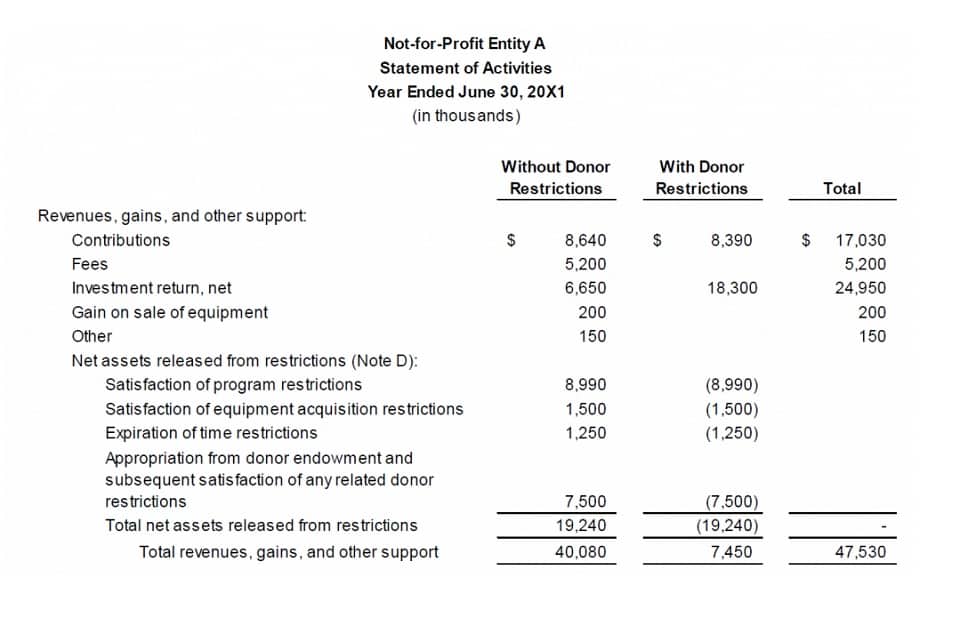Content

These earnings could be used to fund an expansion or pay dividends to shareholders at a later date. Retained earnings are related to net income because they increase or decrease depending on whether a company has a net income or net loss for the year. When you prepare a balance sheet, you must first have the most updated retained earnings balance. To get that balance, you take the beginning retained earnings balance + net income – dividends.
In this case, the company would need to take action to improve its financial position. Retained earnings represent a critical component of a company’s overall financial health, as they indicate the profits and losses the company has retained. Let’s say you’re preparing a statement of retained earnings for statement of retained earnings example 2021. Your beginning retained earnings are the retained earnings on the balance sheet at the end of 2020 ($200,000, for example). While a t-shirt can remain essentially unchanged for a long period of time, a computer or smartphone requires more regular advancement to stay competitive within the market.
Statement of retained earnings example
The statement of retained earnings is prepared second to determine the ending retained earnings balance for the period. The statement of retained earnings is prepared before the balance sheet because the ending retained earnings amount is a required element of the balance sheet. The following is the Statement of Retained Earnings for Printing Plus. Understanding retained earnings is crucial for any business owner or investor who wants to analyze a company’s financial health accurately. By knowing how much profit has been kept over time and what factors contribute to those numbers changing, investors can make more informed decisions about where to put their money. Additionally, companies can use this information when making strategic choices regarding future investments or dividend payments.
Are you confused about where retained earnings belong in the financial statements? As a business owner or accountant, it’s essential to understand how to properly calculate and present your company’s financial information. In this blog post, we will explore whether retained earnings go on the income statement and provide a step-by-step guide on how to calculate them accurately.
Which Transactions Affect Retained Earnings?
Negative retained earnings mean a negative balance of retained earnings as appearing on the balance sheet under stockholder’s equity. This is the net profit or net loss figure of the current accounting period, for which retained earnings amount is to be calculated. A https://www.bookstime.com/ net profit would lead to an increase in retained earnings, whereas a net loss would reduce the retained earnings. Thus, any item such as revenue, COGS, administrative expenses, etc that impact the Net Profit figure, certainly affects the retained earnings amount.

When expressed as a percentage of total earnings, it is also called the retention ratio and is equal to (1 – the dividend payout ratio). For this reason, retained earnings decrease when a company either loses money or pays dividends and increase when new profits are created. Examples of these items include sales revenue, cost of goods sold, depreciation, and other operating expenses. Non-cash items such as write-downs or impairments and stock-based compensation also affect the account.
Why do people invest in the stock market?
Retained earnings are like a running tally of how much profit your company has managed to hold onto since it was founded. They go up whenever your company earns a profit, and down every time you withdraw some of those profits in the form of dividend payouts. Now, add the net profit or subtract the net loss incurred during the current period, that is, 2019. Since company A made a net profit of $30,000, therefore, we will add $30,000 to $100,000. As an investor, you would be keen to know more about the retained earnings figure.
So, if you as an investor had a 0.2% (200/100,000) stake in the company prior to the stock dividend, you still own a 0.2% stake (220/110,000). Thus, if the company had a market value of $2 million before the stock dividend declaration, it’s market value still is $2 million after the stock dividend is declared. This is because due to the increase in the number of shares, dilution of the shareholding takes place, which reduces the book value per share. And this reduction in book value per share reduces the market price of the share accordingly.


